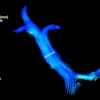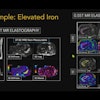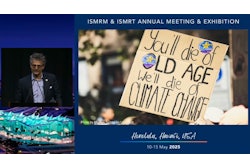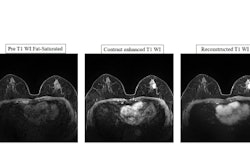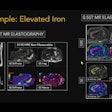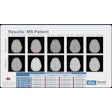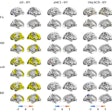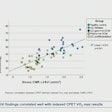HONOLULU - Sustainability in medical imaging is of deep concern, and there are a number of ways to tackle the problem of negative environmental impacts caused by MR imaging, according to a presentation delivered May 11 at the International Society for Magnetic Resonance in Medicine (ISMRM)/International Society for MR Radiographers & Technologists (ISMRT) conference.
The "greening" of MR imaging is part of a much bigger picture of sustainability in medical imaging, presenter Saif Afat, MD, of University Hospital Tübingen in Germany, told session attendees, noting that this effort requires discernment and perseverance. Saif Afat, MD
Saif Afat, MD
"In each one of these steps, there are [a variety of] approaches for ways to reduce waste," he said.
There are two main categories of imaging waste, Afat noted: contrast agents and energy and workforce patterns, he said. He outlined the path contrast takes after it's been used for imaging:
Gadolinium-based contrast agent (GBCA) waste from both inpatients and outpatients goes into the sewage system; conventional sewage treatment puts it into surface water and groundwater; it then goes into the drinking water production cycle. Water treatment does initiate degradation of GBCA, but still, the agent ends up in consumer drinking water.
Afat offered six tips for making MR imaging more sustainable and less toxic to the environment:
1. Use high-relaxivity GBCAs, which are "not only sustainable, but also safer for patients with kidney problems," he said.
2. Reduce GBCA waste by using a multi-patient injection system, which can cut contrast waste by 73% to 100%; reduce plastic waste by 85% to 93%; and decrease exam time by 41 seconds.
3. Consider collecting patient urine via toilet water filtration (for example, Netherlands-based Zereau's system), Afat said, noting that almost 15% of the GBCA injected into the patient can be recovered in the urine, and 40% of iodine contrast.
4. Reduce energy consumption by more than 50% by switching MRI systems off when not in use and by more than 45% by setting workstations in "short standby."
5. Use AI to reduce energy consumption by incorporating an energy-saving mode and/or "eco power" mode -- which can also shorten workflows. Afat noted that AI can have a significant impact in the radiology department, from image acquisition processing and clinical decision support to opportunistic screening and patient scheduling.
6. Use faster protocols to reduce scan time.
These suggestions are all part of the ongoing effort to make MR imaging greener, according to Afat.
"Every small step [toward sustainability] counts," he concluded.
Check out AuntMinnie.com’s full coverage of ISMRM 2025 here.
